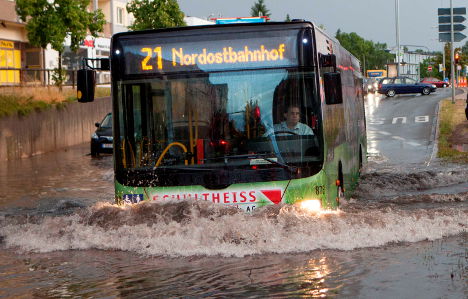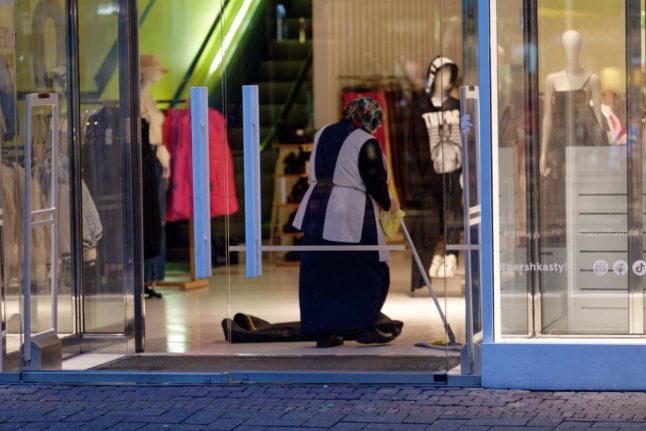"Citizens worry most about money, the environment and their health," said Rita Jakli, spokeswoman for insurance company R+V Versicherung that has produced the "Fears of the Germans" study annually since 1992.
This year, the number 1 cause of concern was the Eurozone crisis and its economic impact on Germany, cited by 60 percent of 2,400 people polled across the country.
"Germany is one of the countries that to a large and disproportional extent are liable and expected to shoulder the cost of supporting indebted EU members," said Dr Manfred Schmidt, a political scientist at Heidelberg University and adviser to the study.
Specifically, "The majority of Germans are afraid the Eurozone crisis will hit tax payers hard and that the cost of living is rising," Jakli added. But the issue was still down 8 percent on last year.
Generally though, Germans are now more relaxed than at any point in the survey's 22-year history, said the researchers, citing a two percent drop in the overall 'Fear Index'.

Old age looming large
Sharing the number two slot, a major concern for most people is old age and the prospect of dependency on others and needing special care.
Women are more worried at 58 percent, compared to 45 percent among men. The threat of serious illness also troubles 54 percent of women, compared to 40 percent of men.
"Because of their long life expectancy, women are much more afraid of having to be cared for," said Jakli. "Moreover, as a rule they carry the brunt of giving care in the home, and so they know how nerve-wracking and costly that is." Around 2.5 million people currently receive care in Germany.
Fears that are commonly magnified by the media like terrorism feature prominently (39 percent). But the survey also shows a sober understanding of many issues in the public spotlight, experts said.
"The Germans are not a race of scaredy-cats, but show reasonable concern for real events and problems," said Schmidt.

Generally, the public is well attuned to issues and also aware that rising living costs are due to a combination of factors, he added.
"The broad social welfare system and rigorous environmental protection [measures] demand their share of funds and pinch disposable incomes, mainly through social spending and taxes, as well as the rising cost of electricity, gas, water and garbage disposal," he said.
Flooding – but not in my back yard
At 51 percent, fear of natural disasters shared the second slot on the list, down five percent since 2013.
But consequences of extreme weather like storms and flooding that wreaked havoc in Germany in 2013 still seem abstract to many people: Only 19 percent said they feared their homes could directly suffer.
International instability also plays a large part in stoking anxiety. Fear of war and political crises plague every third citizen.
Thirty-five percent of Germans worry the country will get sucked into a military conflict, and 37 percent fear events in Ukraine can trigger an armed conflict between the West and Russia.
Another 44 percent said they were afraid of "tensions caused by foreigners".
Public confidence in politicians remains shaky but is improving. Two years ago, 55 percent thought that most politicians were simply out of their depth. This year, 44 percent thought this, up one point on 2013.
Open hostilities between government and opposition had been tempered by the formation of the grand coalition after last year's general election. This had helped restore some faith in politicians, the researchers speculated.
"Germans react sensitively to harsh public debates," said Schmidt. "A sharp and polarized party-based conflict creates political and economic anxiety, but muted and mostly internally contained competition [between parties] in the coalition has more of a calming effect."

Unemployment and living cost fears plagued residents of the former DDR more than people from the former West Germany (43 and 30 percent).
The difference is founded, said Jakli, citing current 9.4 percent unemployment in the east compared to 5.9 percent in the west of the country.
Clued-up kids
Meanwhile, young people showed surprising maturity. Rather than fretting about dates or how to dodge school, 16-year-olds said they were most concerned about the high cost of living.
The issue ranked 15th in 1992 and rose to first place this year.
Parents also seemed to have greater faith in their offspring making the right calls: Only 32 percent worried about drug addiction affecting their children, placing this 16th on their list of concerns.




 Please whitelist us to continue reading.
Please whitelist us to continue reading.
Member comments